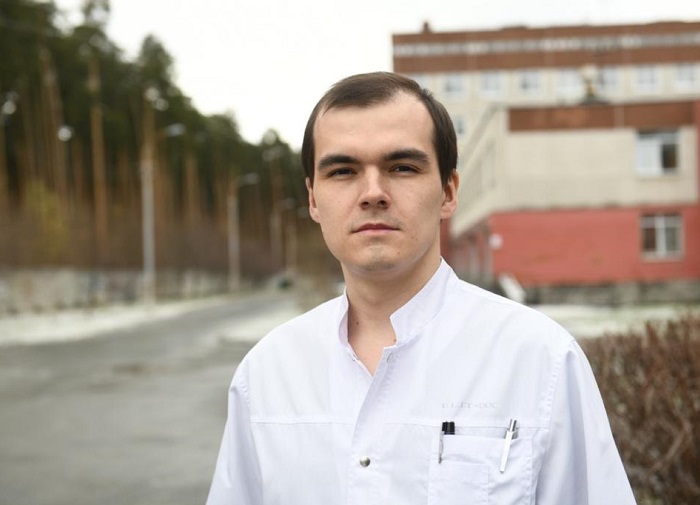 Telegram, ВКонтакте, Одноклассники
Telegram, ВКонтакте, Одноклассники
 Telegram, ВКонтакте, Одноклассники
Telegram, ВКонтакте, Одноклассники

City Clinical Hospital No. 40 in Ekaterinburg in the spring became, in fact, the epicenter of the fight against the new coronavirus infection. The specialists of the institution, many of whom combine practical activities with teaching and research at Ural State Medical University (USMU), have in recent months cured over 5,500 COVID-19 patients.
Working under the conditions of the coronavirus epidemic has become a unique experience for the doctors of the City Clinical Hospital No. 40, admits Vitaly Belousov, head of the 1st infectious diseases ward and assistant professor at the Department of Infectious Diseases and Clinical Immunology of USMU.
“We have probably never encountered anything similar to what is happening now although I cannot speak for my older colleagues who saw an outbreak of diphtheria and polio. In my practice, there were, for example, outbreaks of measles, flu. Of course, all this does not compare to the scale of the current situation, when specialists and entire hospitals are re-profiled,” says Vitaly Belousov.
The working day of the head of the infectious diseases ward begins with an internal line, where the on-duty team of specialists reports on the condition of the patients – the dynamics of the disease, vital indicators. This is followed by a general hospital assembly, after which the ward doctors discuss the plan for the day and go for rounds – usually from 10 to 14 hours infectious disease specialists are in the “red zone”. Usually, Vitaly Belousov himself checks on severe patients. Then the staff on duty starts working in the “red zone”.
“Of course, the workload has increased now. This has already happened during outbreaks of diseases, but before the peak of epidemics lasted no more than two to three months. Now the situation is completely different, but still we had the opportunity to take small vacations and switch at least a little,” says the head of the infectious diseases ward.
Another feature of the current epidemic that infectious disease specialists had to face is a change in the profile of patients: if earlier it was mainly young people who communicate a lot, have contact, and, accordingly, could more often “catch” the infection, now 80% are patients of the older age group … Therefore, infectious disease specialists were reinforced by therapists who help to deal with comorbidities, which was not so typical for the infectious diseases department before. In recent months, infectious disease specialists themselves got the hang of adjusting a hypertension even before consulting specialized specialists.
At the same time, infectious disease specialists have always had a “red zone” by itself, because in addition to coronavirus, there are other highly contagious diseases, notes Vitaly Belousov. For example, during the outbreak of the Ebola virus, a patient with a fever who came from an endemic region was observed at City Clinical Hospital No. 40. Then the specialists also observed the whole complex of security measures, used protective suits.
“I don’t think infectious disease specialists are threatened by the disappearance of the “red zone”. But at some point, the load will still decrease – any epidemic has its own laws of development, and someday the current one will decline. When this happens, I would, of course, take a vacation, relax with my family,” says Vitaly Belousov.
Be that as it may, the doctors of the City Clinical Hospital No. 40 are still in the fighting mood, says the head of the infectious diseases ward. They are not accustomed to working in a difficult regime – there is no doubt that in the coming months, the hospital’s doctors will help many hundreds of patients return to normal life.